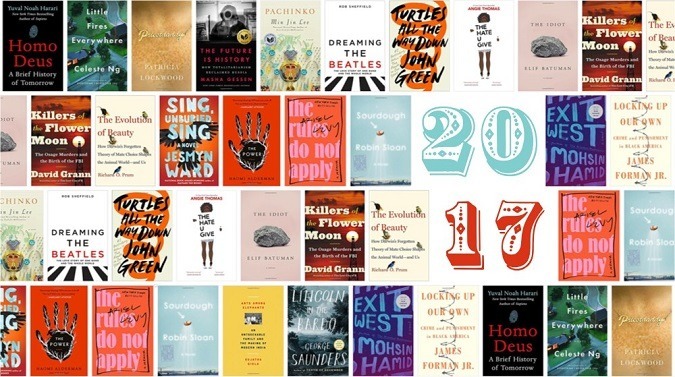Eight Tips To Understand and Remember What You Read — Especially As You Read Nonfiction
 ___
___
Despite Instagram, YouTube, Facebook, Twitter, and television, (or perhaps precisely because of all of them) traditional reading is still an important skill. Whether it is magazines, professional manuals or fascinating books, people still need to read, now and in years ahead. And much of it is nonfiction material, where it’s important to really understand and then remember what you are reading.
An unfortunate reason why many people don’t read much these days is that they don’t read well. Reading, for them, is slow, hard work and they don’t remember as much as they should. They often have to read something several times before they understand and remember what they read.
Why? You would think that everyone learns how to read well at school. Schools do try, but I work with middle-school teachers and they tell me that many students are 2–3 years behind grade level in reading proficiency. Some of the blame can be placed on fads for teaching reading, such as phonics and “whole language,” which sometimes are promoted in shallow ways that don’t respect the need for both approaches. And much of the blame can be laid at the feet of parents who set poor examples and, of course, on the youngsters who are too distracted by social media and television to learn how to read well.
Now the good news. For anyone who missed out on good reading skills, it is not too late to improve now. I summarize below what I think it takes to read with good speed and comprehension.
- Read with a purpose.
- Skim first.
- Get the reading mechanics right.
- Be judicious in highlighting and note taking.
- Think in pictures.
- Rehearse as you go along.
- Operate within your attention span (and expand it).
- Rehearse, Rehearse and Rehearse.
1) Know Your Purpose
You should start by having a purpose for your reading and by thinking about how that purpose is being fulfilled during the actual reading. Checking continually how the purpose is being fulfilled (or not) helps you stay on task and focus on the more relevant parts of the text. This also saves time and effort because most relevant items get the attention they deserve.
Identifying the purpose should be easy. Just ask yourself, “What’s the point in reading this?” It could just be to be entertained or pass the time. It could also be:
- to better understand a certain group of people, gaining insight into their perspectives and beliefs,
- to crystallize your political position, such as why a given government policy should be supported or opposed,
- to develop an informed plan or proposal, or
- to better prepare for an important exam.
In sum, you should always formulate your purpose — what you should learn and remember from the reading.
2) Skim First
Some reading tasks require no more than skimming. Proper skimming includes putting an emphasis on the headings, pictures, graphs, tables, and the key paragraphs which are usually at the beginning and the end.
Even material that has to be studied carefully should be skimmed first. The benefits of skimming first are that the skimming: 1) primes memory, making it easier to remember when you read it the second time, 2) orients the thinking, helping you to know where the important content is in the document, 3) creates an overall sense and gestalt for the document, which in turn makes it easier to remember most important details.
3) Get the Reading Mechanics Right
To better process and remember what you read, eyes need to move in a disciplined manner. When you need to read and remember large blocks of text, your eyes must snap from one fixation point to the next in left- to right-sequence, and the fixations should not be one individual letters or even single words, but rather on several words at the same time. Poor readers who stumble along from word to word have lower comprehension because their mind is preoccupied with recognizing the letters and their arrangement in each word. Countless times I have heard college students say, “I read that chapter three times, and I still can’t answer your questions.” When I ask thought-provoking questions about the material, they often can’t answer the questions because they can’t remember the meaning of what they read, because their focus on the words themselves kept them from associating what their eyes saw with their own pre-existing knowledge and thus facilitating remembering. To remember what you read, you have to think about what the words mean.
I am not arguing against phonics, which in my view is vital for the initial learning of how to read. But phonics is just the first step in good reading practice. At some point, the reader needs to recognize whole words as complete units and then expand that capability to clusters of several words.
Among the tactics for good reading mechanics, I suggest the following:
- Make good eye contact with all the text not being deliberately skimmed
- See multiple words in each eye fixation
- Strive to expand the width of each eye fixation (on an 8.5″ width, strive for three fixations or eventually two per line). This skill has to be developed in stages. First, learn how do read at five or six fixations per line. Then work on four per line. Then three.
- Snap eyes from one fixation point to another (horizontal snaps on long lines, vertical snap if whole line in a column can be seen with one fixation).
Learning how to do this takes practice. If you can’t do it on your own, consider formal training from a reading center or program.
4) Be Judicious in Highlighting and Note Taking
Use a highlighter to mark a FEW key points to act as the basis for mental pictures and reminder cues. Add key words in the margins if you don’t find useful clues to highlight.
Many people use highlighter pens to identify key parts of nonfiction texts. But too many either highlight too much or highlight the wrong things. They become so preoccupied in marking up the book that they don’t pay enough attention to what they are reading. A better approach is to highlight just a few key words on a page. If many pages don’t require highlights, sticky tabs on pages with highlights can greatly speed a study process for whole books.
It is crucial to think about the meaning of text. Highlighted text needs to be rehearsed in the context of how it fits with the purpose, why it needs to be remembered, and how it fits with important material that preceded it. Every few paragraphs or pages, depending on the information density, the reader should stop and self-quiz to make sure the important material is being memorized. Making outline notes of such material after it is first read can be an important rehearsal aid for forming immediate memory and for later study. The act of creating such an outline from working memory, and checking it against the content just read, supports memory formation in very powerful ways.
5) Think in Pictures
A picture may or may not be worth a thousand words, but it certainly captures the essence of dozens or hundreds of words. Even better, pictures are much easier to memorize and remember than words. Those competitive memory wizards owe their success (as do card counters in casinos) to their skilled use of techniques based on mental pictures, and ordinary readers can also use to good effect the practice of making mental images of the meaning of text.
The highlighted key words in text, for example, if used as a starting point for mental pictures, then become very useful for memorization. One only has to spot the key words and think of the associated mental images. Sometimes it helps to make mental images of headings and sub-heads. Pictures become easier to remember when they are clustered into similar groups or when they are chained together to tell a story.
6) Rehearse As You Go Along
Read in short segments–a few paragraphs to a few pages, depending on content density–while thinking about and paraphrasing the meaning of what you read.
To rehearse what you are processing, see how many of the mental pictures you can reconstruct. Use headings and highlighted words as needed to help you reinforce the mental pictures.
Think about the content in each segment in terms of how it satisfies the purpose for reading. Ask yourself questions such as, “How does this information fit what I already know? Why did the author say that? What is the evidence? Is there something important missing? Do I agree with ideas or conclusions? Why or why not? What is the practical application?” How much of this do I need to memorize?” Apply the ideas to other situations and contexts. Generate ideas about the content.
7) Operate Within Your Attention Span (and Expand It)
Paying attention is central to memorization, so trying to read when you can’t concentrate is simply a waste of time. Since many poor readers have short attention spans, they should not try to read dense material for more than 10 or 15 minutes at a time. Instead, they should take breaks after 15 minutes or so and quiz themselves on what they just read.
Ultimately, with practice, readers will expand their attention span and be better prepared to concentrate and read for longer periods.
8) Rehearse, Rehearse and Rehearse
As you end a reading session, rehearse what you learned right away. Avoid distractions and multi-tasking before you do so because they interfere with the consolidation processes that enable longer-term memory. Ask and answer again the questions about content mentioned in the “Rehearse As You Go Along” section above.
Remember the key mental pictures, and rehearse what you read later that day. Then rehearse again at last once during the next 2–3 days.
In Summary, to better understand and remember what you read:
- Read with a purpose.
- Skim first.
- Get the reading mechanics right.
- Be judicious in highlighting and note taking.
- Think in pictures.
- Rehearse as you go along.
- Operate within your attention span (and expand it).
- Rehearse, Rehearse and Rehearse.
 Dr. Bill Klemm is a scientist, professor, author, and speaker. As a professor of Neuroscience at Texas A&M University, he taught about the brain and behavior at all levels, from freshmen, to seniors, to graduate students to post-docs. His recent books include Thank You, Brain, For All You Remember. What You Forgot Was My Fault‚ and Mental Biology: The New Science of How the Brain and Mind Relate.
Dr. Bill Klemm is a scientist, professor, author, and speaker. As a professor of Neuroscience at Texas A&M University, he taught about the brain and behavior at all levels, from freshmen, to seniors, to graduate students to post-docs. His recent books include Thank You, Brain, For All You Remember. What You Forgot Was My Fault‚ and Mental Biology: The New Science of How the Brain and Mind Relate.



I took a speed reading course several years ago and unfortunately never really continued the practice. Recently I’ve decided to bring the practice back into my existence. This article is a great synopsis and refresh of that process. Thanks!
Glad you enjoyed it, Chris, and best of luck :-)
Thanks for your tips!